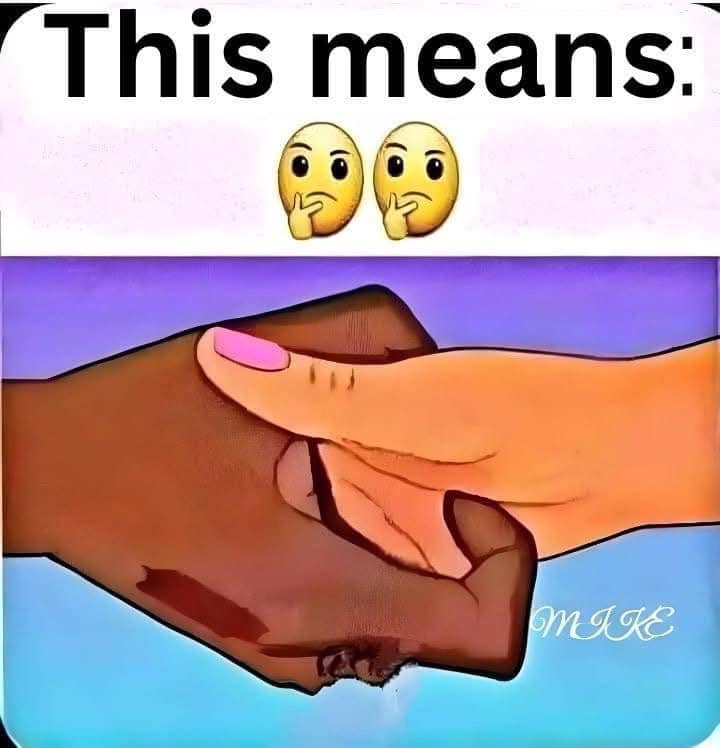Body
language has long been a fascinating way to interpret human interactions, with
subtle gestures often conveying complex emotions or intentions. One such
action—when a man scratches the palm of your hand—can spark curiosity and
speculation. While the meaning of this gesture can vary greatly depending on
cultural norms, personal context, and individual relationships, it often holds
a deeper significance than meets the eye.
In
this guide, we’ll delve into the possible interpretations of this peculiar act,
examining its cultural roots, potential romantic undertones, and the
psychological factors at play.
A
Gesture with Cultural Roots
In
some cultures, scratching the palm during a handshake or touch is seen as a
covert expression of attraction. This small, seemingly insignificant gesture
can carry a flirtatious or intimate undertone, signaling romantic or sexual
interest. It’s a way for someone to express their feelings subtly, without
verbalizing their emotions.
For
example:
- Western Interpretations: In Western
contexts, palm scratching is less common but may still be interpreted as an
attempt to establish a physical connection.
- African and Caribbean Cultures: In certain
African or Caribbean traditions, this gesture is more overtly linked to
romantic or sexual advances, often used in casual social settings.
- Eastern Perspectives: In many Eastern
cultures, physical gestures are generally more restrained, and scratching the
palm might be viewed as unusual or even inappropriate.
Romantic
Undertones: A Subtle Signal
If
a man scratches your palm during a handshake or casual touch, it might be his
way of testing boundaries or gauging your reaction. This gesture can serve as a
discreet form of flirtation, aimed at establishing a sense of intimacy without
overtly crossing social lines.
Signs It Might Be Flirtatious:
1.
Context of the Interaction: If the
gesture occurs during a one-on-one conversation or after a compliment, it could
signal romantic interest.
2.
Accompanying Cues: A warm smile,
sustained eye contact, or a slight lean towards you might reinforce the
flirtatious nature of the gesture.
3.
Repetition: If the gesture happens
multiple times, it’s more likely intentional and meant to convey interest.
Psychological
Perspectives on Touch
From
a psychological standpoint, touch plays a crucial role in human interaction. A
gentle scratch or touch of the palm can stimulate nerve endings, creating a
subtle sensation that heightens awareness and fosters a feeling of connection.
Why It Happens:
- Breaking Barriers: Physical
gestures like this can break the ice and help build rapport, especially in
early stages of a relationship.
- Testing Comfort Levels: The gesture
might be a way to see how comfortable you are with physical closeness.
- Establishing Dominance or Confidence: Some individuals
use touch to assert confidence or demonstrate control in a non-verbal way.
Alternative
Interpretations
Not
every instance of palm scratching is laden with romantic or psychological
intent. Sometimes, it’s simply a casual or unconscious action with no deeper
meaning.
Innocuous Reasons Include:
1.
Nervous Habit: Some people fidget or
engage in small, repetitive gestures when they’re nervous or distracted.
2.
Skin Irritation or Discomfort: Dry
skin, a minor itch, or sensitivity could lead someone to scratch their own
palm—or someone else’s—without realizing it.
3.
Cultural Misunderstandings: What
might seem flirtatious in one culture could be entirely neutral or meaningless
in another.
How
to Interpret the Gesture
To
determine the true meaning behind a man scratching your palm, consider the
following factors:
1. Context Matters: Was the gesture made
in a formal or casual setting? The environment can provide clues about its
intent.
2.
Relationship Dynamics: If the
individual is a close friend or romantic partner, the gesture may carry more
personal significance.
3.
Accompanying Behavior: Pay attention
to other body language cues, such as facial expressions, tone of voice, and
proximity.
How
to Respond
If
you’re unsure how to react to this gesture, here are a few tips:
1.
Read the Room: Evaluate the context
and decide whether the gesture aligns with the overall tone of the interaction.
2.
Set Boundaries: If the gesture feels
uncomfortable or inappropriate, don’t hesitate to step back or address it
directly.
3.
Engage or Disengage: If you sense a
romantic undertone and feel the same way, reciprocating the gesture or engaging
further might be appropriate. Otherwise, maintain neutrality to avoid sending
mixed signals.
Embracing
Non-Verbal Communication
Palm
scratching is just one of many ways people communicate non-verbally. Whether
it’s an intentional flirtation, an unconscious habit, or a simple
misunderstanding, understanding the nuances of such gestures can help you
navigate social interactions with confidence.
By paying attention to context, personal boundaries, and cultural norms, you can better interpret these subtle signals and decide how best to respond.


Post a Comment